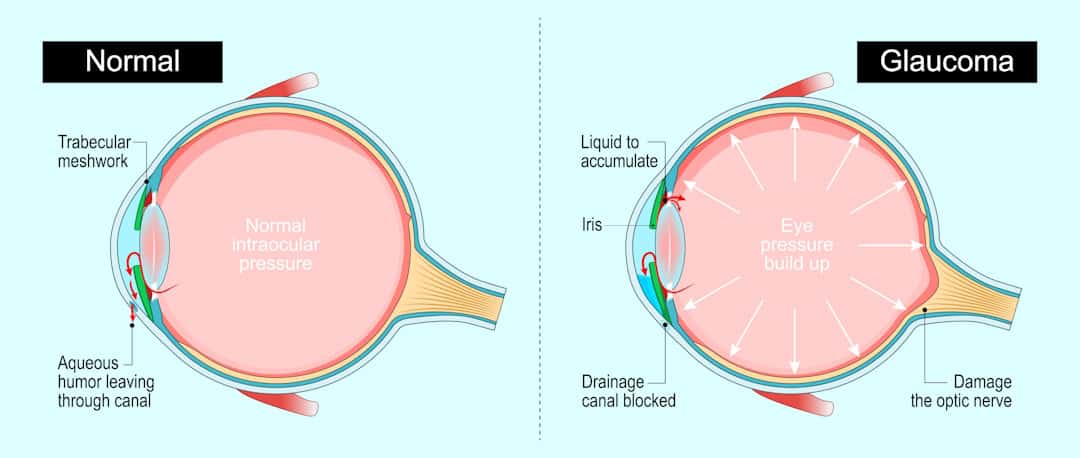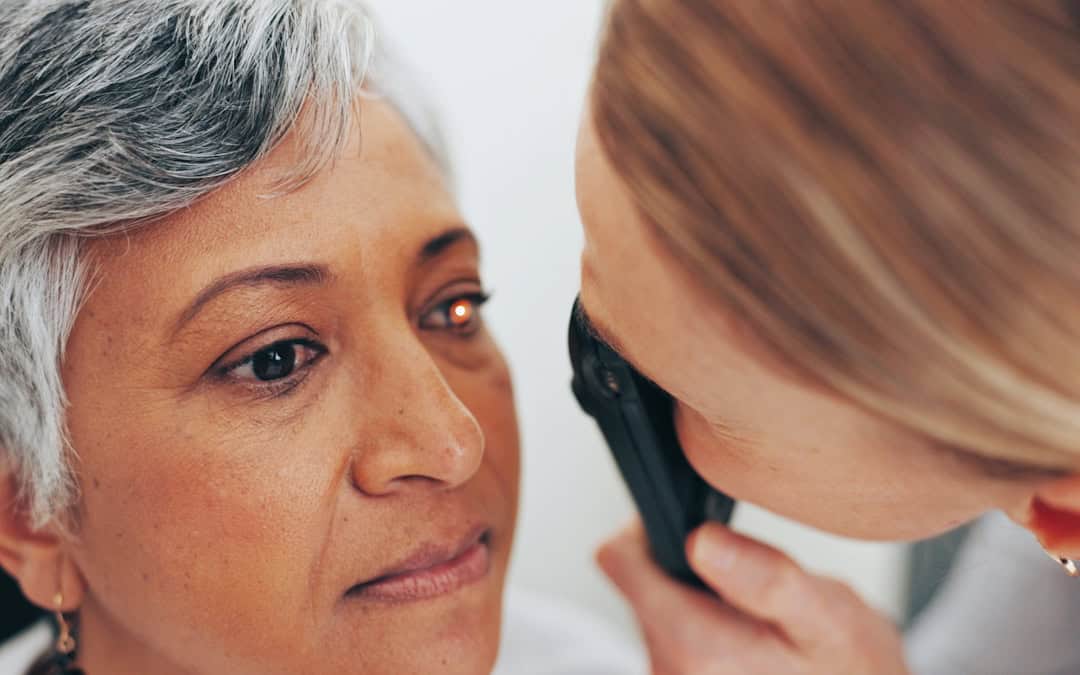Glaucoma is often called the “silent thief of sight” because it can cause irreversible vision loss without noticeable symptoms in its early stages. As one of the leading causes of blindness worldwide, early detection and proactive management are critical in preserving vision.
In this article, we’ll explore what glaucoma is, why early detection is vital, and the management strategies used by experienced eye doctors such as the team at Chang Eye Group that can help protect your eyesight. Whether you’re at risk or simply looking to stay informed, understanding glaucoma is the first step toward healthy vision.
What Is Glaucoma?
Glaucoma is a group of eye diseases that damage the optic nerve, which is essential for transmitting visual information to the brain. This condition usually results in elevated eye pressure that is linked to a problem draining fluid from your eye effectively, but it may also present no symptoms until a later stage.
Types of Glaucoma
The specific treatment options that ophthalmologists are most likely to recommend largely depend on the specific type of glaucoma you have.
- Primary open-angle glaucoma is the most common type of glaucoma that occurs when intraocular pressure (IOP) increases, damaging the optic nerve over time.
- Angle-closure glaucoma is marked by sudden and painful rise in IOP due to blocked drainage channels. This is a critical situation that should be examined by an eye doctor as soon as possible if significant eye pain and/or blurred vision is experienced.
- Normal-tension glaucoma is a type of open-angle glaucoma that causes optic nerve damage despite the patient having normal eye pressure levels.
- Congenital glaucoma is a rare form of the disease that is present at birth.
 Illustration showing normal eye compared to glaucoma eye with increased intraocular pressure (IOP).
Illustration showing normal eye compared to glaucoma eye with increased intraocular pressure (IOP).
Why Early Detection Is Vital
Many glaucoma cases can be effectively treated for many years when they are detected early. However, untreated glaucoma can lead to blindness, which can be particularly concerning because some cases present no symptoms until later stages. This means that having regular eye exams is the best way to detect glaucoma or other eye conditions that you might not notice yourself and prevent vision loss.
Risk Factors for Developing Glaucoma
Glaucoma tends to be more common in individuals in certain demographic groups or with a history of specific types of ocular health conditions. This means that taking steps to understand your likelihood of developing this condition can play a key role in detecting it as early as possible.
You may be at an elevated risk of developing glaucoma if you are in any of the following groups.
- Adults over 60 (especially over 40 for African Americans, Asians or Hispanics)
- Family history of glaucoma
- Have intraocular pressure (high internal eye pressure)
- Have a medical condition that is frequently linked to glaucoma, such as high blood pressure, diabetes, frequent migraines, or sickle cell anemia
- Are extremely nearsighted or farsighted
- Have especially thin corneas
- Have had eye surgery or an eye injury
- Are taking corticosteroid medication
Common Glaucoma Screening Options
The best way to detect glaucoma is by having regular eye exams by an experienced optometrist or ophthalmologist. They will carefully evaluate your ocular and overall health history and perform a comprehensive eye exam, which will include one or more types of diagnostic tests.
A standard dilated eye exam can provide significant information about the condition and functionality of your optic nerves on its own, and further tests are important tools for looking closer if any irregularities are noticed. The glaucoma screening options that are most frequently used include:
- Tonometry, which measures the level of pressure inside your eyes
- Visual Field Test, which identifies specific areas where vision loss that may otherwise be undetectable might be present
- Pachymetry, which measures the thickness of your corneas
- Gonioscopy, which examines the drainage angle in the eye
- Other types of imaging tests that allow us to study a specific part of your eye more closely
Eye Care Strategies for Effectively Managing Glaucoma
While glaucoma cannot be cured, there are many effective options for managing its progression. Detecting glaucoma as early as possible often increases your likelihood of being able to effectively control the disease with medications for many years without having to consider more complex treatment options.
In some cases, making healthier lifestyle choices can also help to reduce the effects of glaucoma. Lifestyle changes often help medications work more effectively, and they tend to have the most significant impact when glaucoma is diagnosed early. We also offer several other treatment options at Chang Eye Group if medications are not enough to successfully manage the disease, such as laser and surgical treatment options.
Medications
Many patients are able to successfully manage the progression of glaucoma through prescription eye drops or oral medications, especially if their condition is detected early. At Chang Eye Group, we may prescribe multiple medications depending on the type of glaucoma you have and the severity of your symptoms, which can significantly reduce your likelihood of needing more complicated interventions. Some of the most common types of eye drops that may be prescribed include:
- Prostaglandins, which reduce eye pressure by improving fluid’s ability to flow from your eyes
- Alpha-adrenergic agonists, which help to reduce eye pressure by reducing the amount of fluid that is present in your eye and helping it drain more effectively
- Beta blockers, which reduce eye pressure by controlling the amount of fluid that your eye produces
- Carbonic anhydrase inhibitors, which reduce fluid production to control eye pressure
- Miotic or cholinergic agents, which support fluid outflow
- Rho kinase inhibitor, which controls fluid production by limiting the capabilities of the rho kinase enzymes that are responsible for it
Many of these eye drops can produce mild to moderate side effects. Most side effects impact your eyes, but they can also affect other parts of your body because your blood stream absorbs part of these medications. Some common side effects include:
- Eye redness, itching, minor pain, or other discomfort
- Blurred vision
- Changes to the appearance of your eyes, such as a darker iris, eyelashes, or eyelid
- Elevated or decreased blood pressure or heart rate
- Breathing problems
- Fatigue
- A metallic taste or dry mouth
- Tingling fingers or toes
In some cases, an oral carbonic anhydrase inhibitor or another type of oral medication may be prescribed. This may be on its own or combined with one or more types of eye drops. Oral medication is considered if eye drops are unable to successfully lower and manage the eye pressure to an acceptable level on their own.
Laser Treatments
Laser therapy can be an ideal next step if eye drops are unable to effectively manage your symptoms or you experience side effects that are too severe to continue taking them. This treatment, which is known as laser trabeculoplasty, is used to reduce pressure in your eye by improving drainage. It uses a laser to improve the effectiveness of fluid drainage between the iris and the cornea. A laser peripheral iridotomy improves drainage by creating a hole in your iris, which may be used as an emergency treatment option for acute angle-closure glaucoma.
Surgical Options
Surgical treatment is often a last resort if other less-invasive options are not successful, but it may also be considered earlier if glaucoma is detected at an unusually late stage or particularly severe symptoms are present. These options may include:
- Filtering surgery, which involves creating an opening in the sclera (the white part of your eye) to increase fluid drainage
- Drainage tubes, which provide another option for allowing excess fluid to drain more effectively
- Minimally invasive glaucoma surgery (MIGS), which is a simpler option for reducing pressure that is frequently combined with cataract surgery or a similar procedure
Lifestyle Adjustments
Like many medical conditions, glaucoma symptoms can often be improved by making simple lifestyle changes. Making intentional choices to live a healthier lifestyle tends to be most effective when your condition is less serious, and this approach is generally used to supplement the effectiveness of one or more medications. Some helpful lifestyle adjustments include:
- Getting plenty of exercise
- Staying hydrated while limiting the amount of fluid that you consume at a time (avoid drinking more than a quart within a short time frame)
- Limiting caffeine
- Managing stress
- Eating a healthy diet
Advances in Glaucoma Detection and Treatment
Medical options for managing glaucoma continue to advance every year. Some of the most promising up-and-coming glaucoma diagnosis and treatment options include:
- Optical coherence technology (OCT), which is a type of non-invasive retina imaging test that uses light waves
- Minimally invasive glaucoma surgery (MIGS), which is an easier alternative to traditional eye surgery with minimal healing time
- Smart eye drop dispensers, which help to ensure that patients are taking the proper dose and provide reminders when doses are missed
Choose Chang Eye Group for Quality Glaucoma Care in Pittsburgh
At Chang Eye Group, we prioritize providing comprehensive eye care solutions for patients throughout the Pittsburgh area. While we know that being diagnosed with glaucoma can be difficult, many of our treatment options are highly effective when this condition is detected early. Stop by one of our convenient locations in Pittsburgh or call us today at (412) 429-2020 to schedule a comprehensive eye exam today to receive a full screening for glaucoma and other potential eye issues.






